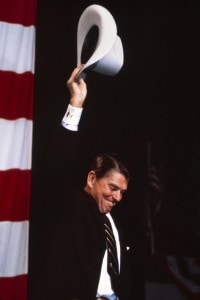Every so often, I wake up in the middle of the night from a recurring nightmare. In it, I am watching the final scene of Citizen Kane. The camera slowly glides over hundreds of boxes and crates in a giant dark warehouse, a room that stretched to infinity. Then, the lens settles on a box marked, “Kennerly photos.” I realized that this warehouse contains my life’s work and I watch helplessly as workmen lift boxes filled with images and historic records and pitch them into a roaring fire. My pictures are Rosebud.
Throughout my fifty-year career, I have pursued a relentless mission to document history in the making. With a combination of hard work, research, and a little intuition I have been able to, on numerous occasions, get myself into the room where history is being made. Often, I am the only person there other than the history makers themselves. My photographs have documented the fields of fire during the Vietnam War and the President of the United States as he ended that bitter conflict. I was ringside when Frazier dealt Mohammed Ali his first knock-out at Madison Square Garden and stepped around hundreds of dead bodies in Jonestown. I documented Reagan and Gorbachev during their historic Fireside Summit and, on election night 2000, I was with Bush and Cheney as they realized their presidential contest had ended in a tie.




As a young shooter, barely out of high school, I wanted people to see my pictures; not because they were cool – well, not only because they were cool – but because they revealed moments of history that otherwise would have gone unseen. I am just as driven now to document history with my camera – to peer inside closed doors, to reveal an individual’s character through a portrait or a slice of our country that might be fading away. And I am just as determined to make sure that those images realize their mission of revealing that history to future generations.
In this digital era, images have the potential to provide visceral, visual primary source historic information. They provide dynamic new ways to teach history to future generations in any region around the globe. However, photography collections are expensive and cumbersome to manage. Too often, I have seen collections destroyed, lost, or stored away in a basement or conventional analog archive never to be seen again – their historic content and educational potential lost forever.




2016 marks the 50th anniversary of my career as a professional photographer. To celebrate that extraordinary milestone, I am launching the David Hume Kennerly Archive Creation Project with the objective of transforming my half-century of visual history into a cutting-edge digital educational tool that is fully searchable and available to the public for research and artistic appreciation.
Seeing this collection available to the public would be the realization of my lifelong dream for the possibilities for my collection. It is the flipside of that dark nightmare that haunts me about the many threats to these fragile historic objects. However, I know too well how real my nightmare could be and that making this dream a reality will take an all-out effort and a race against time.
Portions of my work are already housed in wonderful institutions, including the Dolph Briscoe Center for American History and my White House photos at the Gerald R. Ford Presidential Museum & Library. And for more than a decade my wife, Rebecca Soladay Kennerly, and I have worked to make this good dream come true, investing every dollar we could to protect, organize and process my photographs and related materials. A year ago, we hired Randa Cardwell, an extraordinary curator who had recently graduated from UCLA with a Masters Degree in Library and Information Sciences to help with this project. And my collection, spanning a half-decade and containing more than a million items, the size of a small presidential library, is a real monster – impossible to tame by us alone. Our small team is now ready to take the next big steps in helping the Kennerly Collection fulfill its potential as an historic educational resource.
Check out our work in detail at the Archive Page on Kennerly.com.
And please, SIGN UP at the bottom of the Archive Page now to follow our progress in this ambitious project. By signing up you will receive –
• project updates
• archive stories
• ways to help
• appearance dates
• exhibition information
• print sales opportunities
• early sneak peeks at photos we unearth along the way – such as this unpublished collection of images I made of a young lawyer who I first photographed at an impeachment hearing of President Richard Nixon in the House Judiciary Committee in 1974.
It’s going to be quite a journey. Would love to have you along for the ride.

Leave a Reply
You must be logged in to post a comment.